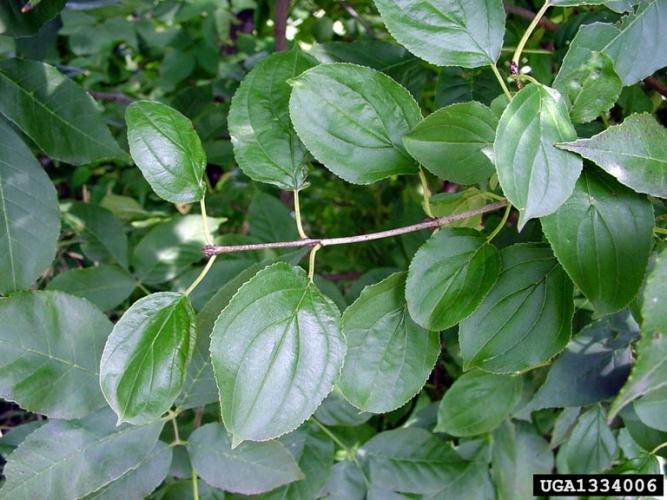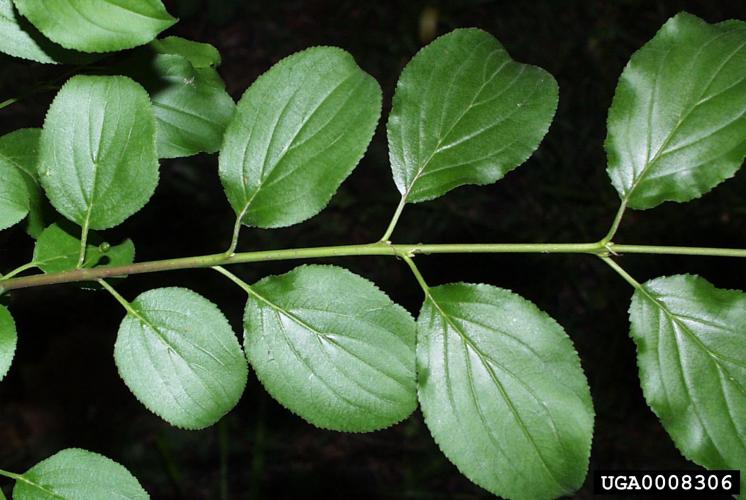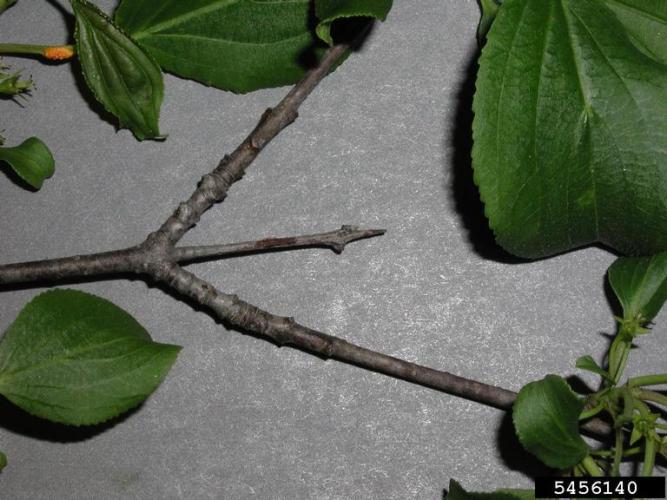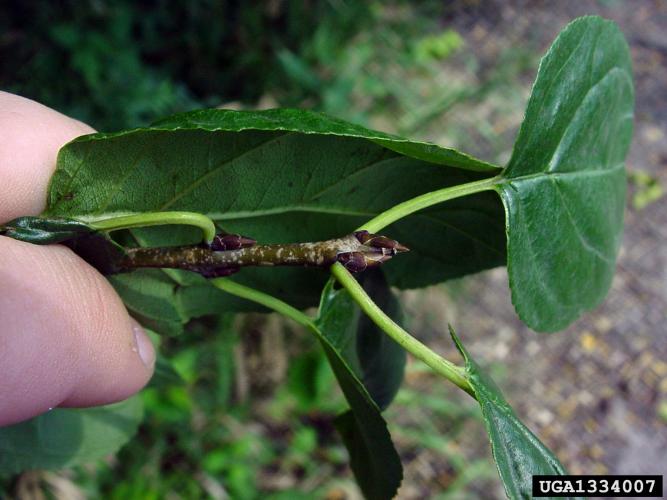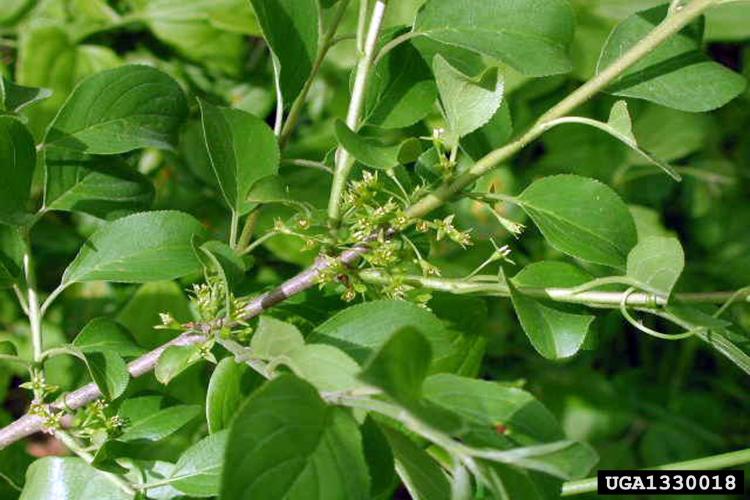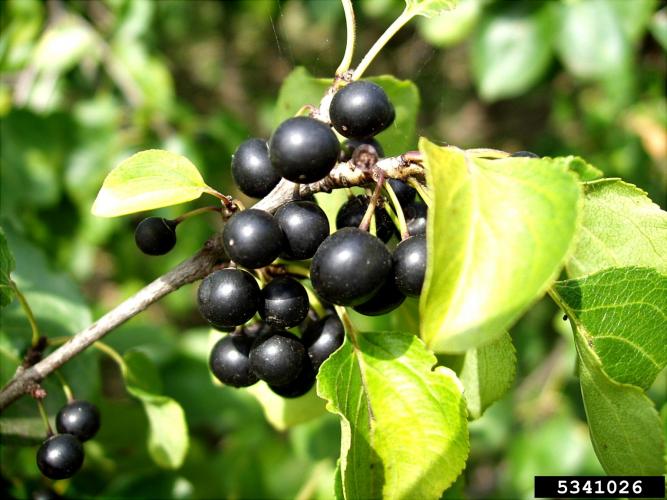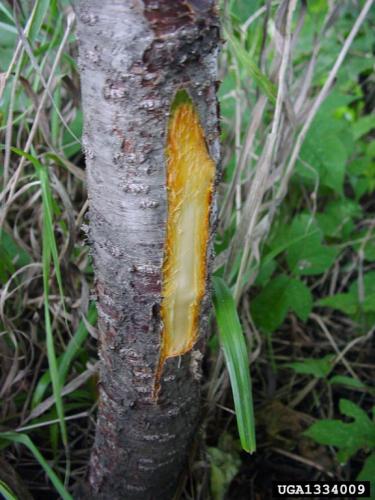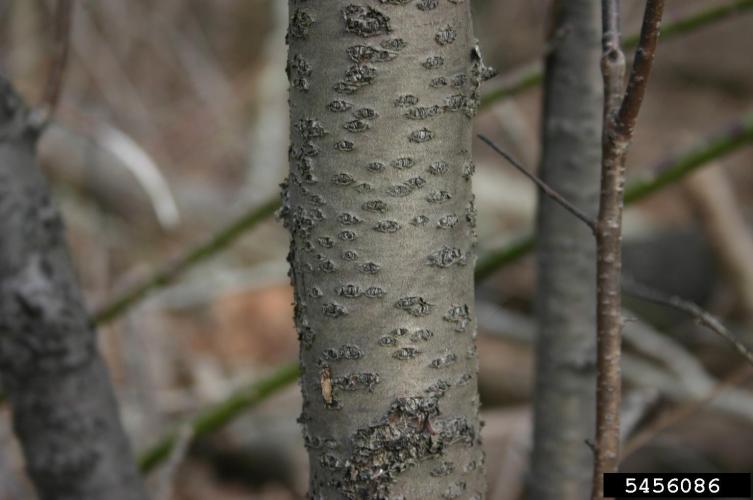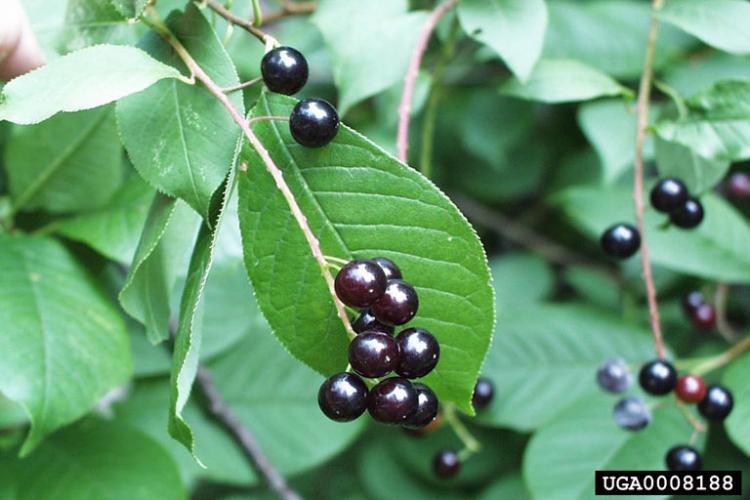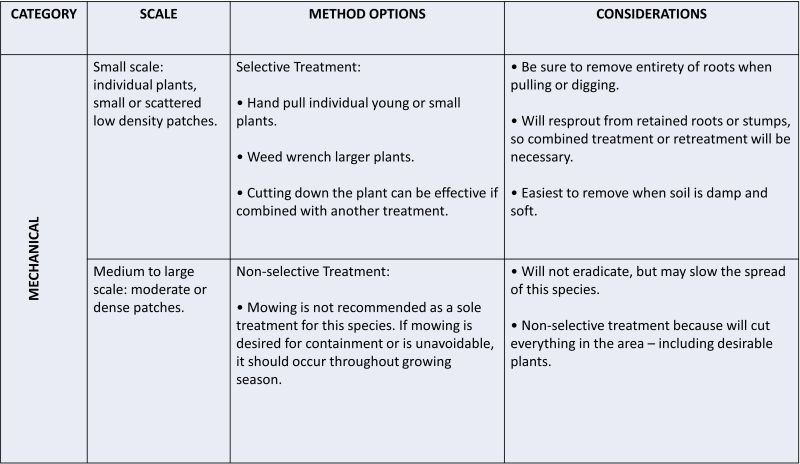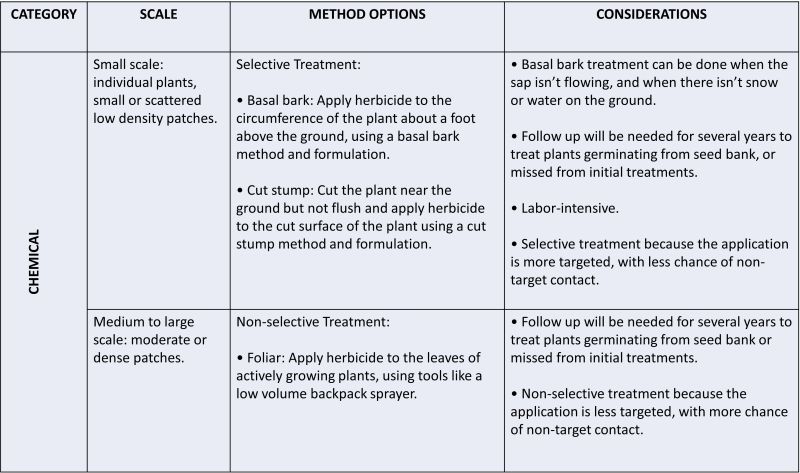Buckthorn, Common
Identification
Appearance
Common buckthorn is a deciduous shrub or small tree that can grow to 25 feet in height. The bark is dark gray and the inner bark is orange (easily seen when the tree is cut). Twigs are usually tipped with a sharp spine.
Foliage
The leaf arrangement is usually subopposite, but examples of opposite and/or alternate arrangements are commonly found. Leaves are dark green, oval, 1.5 to 3 inches long, slightly serrate with 3 to 4 pairs of curving veins and a somewhat folded tip.
Flowers
Flowering occurs in the spring, when yellow-green, 4-petaled flowers develop in clusters of 2 to 6 near the base of the petioles. Plants are dioecious (male and female flowers occur on separate plants).
Fruits
Fruits are small, black berries that are 0.25 inches in diameter.
Check out the downloadable fact sheet above.
Check out this video by RiverBankMedia on identifying buckthorn.
Biology
Ecological Threat
- Birds and mammals feed on buckthorn berries during the winter, aiding in the dispersal of seeds. While buckthorn may benefit from this behavior, the feeding animals do not. Buckthorn berries contain emodin, a natural laxative, that prevents mammals from digesting sugars found in the berries.
- Like many other invasive trees and shrubs, buckthorn leafs out early and retains its leaves into late fall, giving it a much longer advantageous growing season than native plants.
- Buckthorn can increase the amount of nitrogen in the soil, impacting the composition of native species that can grow in the area.
- Common buckthorn invades forests and can form dense thickets crowding out native shrubs and understory plants. Once established, it is difficult to remove.
Origin
Common buckthorn is a native of Europe and was introduced into the United States as an ornamental shrub
Habitat
Forests, forest edges, meadows, fields, disturbed areas
Life Cycle
Buckthorns reproduce by seed but plants can root sprout or regenerate even after they are cut or burned. Plants mature at 5-6 years old. Seed production is prolific. Common buckthorn fruits ripen from August to September while glossy buckthorn fruits ripen earlier—July to August. Seed germination rates are high and germinate well in the shade. Seeds remain viable for at least 2 years. Plants are usually dioecious; males do not produce fruit. Fruits are eaten by birds, mice, and deer. Seeds viable for 2-6 years.
Vermont Distribution
How You Can Help
Native/non-invasive alternatives
Alder-leaved buckthorn (Rhamnus alnifolia), Cherries (Prunus sp.)
Native Perennials and Shrubs for Vermont Gardens
Alternatives to Common Invasive Plants and Characteristics of Select Alternatives
Citations
Photo Credit
1334006,1334009,1334007, Chris Evans, University of Illinois, Bugwood.org
5456140, 5456086, Leslie J. Mehrhoff, University of Connecticut, Bugwood.org
0008306, 0008188, Paul Wray, Iowa State University, Bugwood.org
5341026, Jan Samanek, Phytosanitary Administration, Bugwood.org
Information Credit
Invasive.org, European buckthorn
Riverbank Media, European buckthorn
Maine Natural Areas Program, Common buckthorn
New York Invasive Species Information Profile on Common Buckthorn
Michigan Department of Natural Resources Best Control Practices for Common Buckthorn
